#Vanished in Yosemite
Text
Vanished in Yosemite (2023 Lifetime)
Vanished in Yosemite (2023 Lifetime) #LifetimeMovies #Lifetime #VanishedinYosemite
Vanished in Yosemite (2023 Lifetime)
📺. Stream/Watch the Movie (Ad): Subscribe to the Lifetime Movie Club
Cast: Skye Coyne, Kelcie Stranahan, Rob LaColla Jr., Jason Tobias
Director:
Writer:
➡️ Check out our Youtube Channel: Lifetime Uncorked: Lifetime Movie Reviews
🎧 Listen to the Lifetime Uncorked Podcast: Listen Now
🍷 Support the show with a $5 tip:…

View On WordPress
#2023#Jason Tobias#Kelcie Stranahan#lifetime#Lifetime Movie#Lifetime Movie Club#Lifetime Movie Network#Lifetime Movies#LMN#Rob LaColla#Skye Coyne#tv movie#Vanished in Yosemite
0 notes
Photo

Vanishing wonders: Natural arches fall. Sea stacks crumble into the surf. Lava swallows coastlines. Breathtaking landmarks that were around one day, may not be the next (like the famous Jeffrey pine atop Yosemite’s Sentinel Dome, above).
PHOTOGRAPH BY HARALD SUND, GETTY IMAGES
#harald sund#photographer#getty images#landscape#jeffrey pine#yosemite sentinal dome#nature#yosemite national park#national geographic
58 notes
·
View notes
Text
From a former law enforcement park ranger and investigator, this female-driven true crime adventure follows the author’s quest to find missing hikers along the Pacific Crest Trail by pairing up with an eclectic group of unlikely allies.
As a park ranger with the National Park Service's law enforcement team, Andrea Lankford led search and rescue missions in some of the most beautiful (and dangerous) landscapes across America, from Yosemite to the Grand Canyon. But though she had the support of the agency, Andrea grew frustrated with the service's bureaucratic idiosyncrasies, and left the force after twelve years. Two decades later, however, she stumbles across a mystery that pulls her right back where she left - three young men have vanished from the Pacific Crest Trail, the 2,650-mile trek made famous by Cheryl Strayed's Wild , and no one has been able to find them. It’s bugging the hell out of her.
Andrea’s concern soon leads her to a wild environment unlike any she’s ever ventured into - missing person Facebook groups. Andrea launches an investigation, joining forces with an eclectic team of amateurs who are determined to solve the cases: a mother of the missing, a retired pharmacy manager, and a mapmaker who monitors terrorist activity for the government. Together, they track the activities of kidnappers and murderers, investigate a cult, rescue a psychic in peril, cross paths with an unconventional scientist, and reunite an international fugitive with his family. Searching for the missing is a brutal psychological and physical test with the highest stakes, but eventually their hardships begin to bear strange fruits—ones that lead them to places and people they never saw coming.
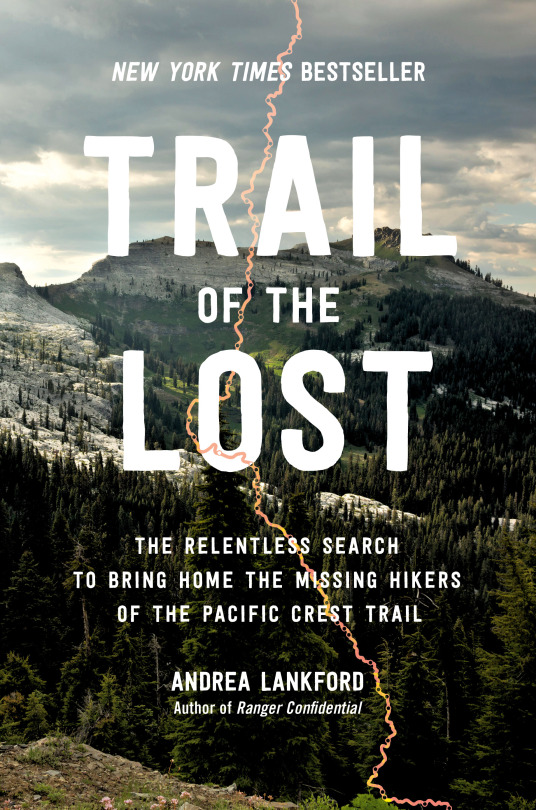
11 notes
·
View notes
Text
How the world’s favorite conservation model was built on colonial violence | Grist
On a 1919 trip to the United States, King Albert I of Belgium visited three of the country’s national parks: Yellowstone, Yosemite, and the newly established Grand Canyon. The parks represented a model developed by the U.S. of creating protected national parks, where visitors and scientists could come to admire spectacular, unchanging natural beauty and wildlife. Impressed by the parks, King Albert created his own just a few years later: Albert National Park in the Belgian Congo, established in 1925.
Widely seen as the first national park in Africa, Albert National Park (now called Virunga National Park), was designed to be a place for scientific exploration and discovery, particularly around mountain gorillas. It also set the tone for decades of colonial protected parks in Africa. Although Belgian authorities claimed that the park was home to only a small group of Indigenous people — “300 or so, whom we like to preserve” — they violently expelled thousands of other Indigenous people from the area. The few hundred selected to remain in the park were seen as a valuable addition to the park’s wildlife rather than as actual people.
And so modern conservation in Africa began by separating nature from the people who lived in it. Since then, as the model has spread across the globe, inhabited protected areas have routinely led to the eviction of Indigenous peoples. Today, these conservation projects are led not by colonial governments but by nonprofit executives, large corporations, academics, and world leaders.
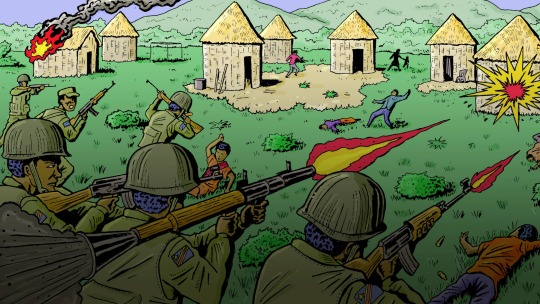
For much of human history, most people lived in rural areas, surrounded by nature and farmland. That all changed with the Industrial Revolution. By the end of the 19th century, European forests were vanishing, cities were growing, and Europeans felt increasingly disconnected from the natural world.
“With industrialization, the link with the natural cycle of things got lost — and that also led to a certain type of romanticization of nature, and a longing for a particular type of nature,” said Bram Büscher, a sociologist at Wageningen University in the Netherlands.
In Africa, Europeans could experience that pure, untouched nature, even if it meant expelling the people living on it.
“The idea that land is best preserved when it’s protected away from humans is an imperialist ideology that has been imposed on Africans and other Indigenous people,” said Aby Sène-Harper, an environmental social scientist at Clemson University in South Carolina.
For Europeans, creating protected parks in Africa allowed them to expand their dominion over the continent and quench their thirst for “undisturbed” nature, all without threatening their ongoing expansion of industrialization and capitalism in their own countries. With each new national park came more evictions of Indigenous people, paving the way for trophy hunting, resource extraction, and anything else they wanted to do.

In the mid-19th century, European colonization of Africa was limited, largely confined to coastal regions. But by 1925, when King Albert created his park, Europeans controlled roughly 90 percent of the continent.
At the time, these parks were playgrounds for wealthy Europeans and part of a massive imperial campaign to control African land and resources. Today, there are thousands of protected national parks around the world covering millions of acres, ranging from small enclosures like Gateway Arch National Park in St. Louis to sprawling landmarks like Death Valley in California and Kruger National Park in South Africa. And the world wants more.
Scientists, politicians, and conservationists are championing the protected-areas model, developed in the U.S. and perfected in Africa. In late 2022, at the United Nations Biodiversity Conference in Montreal, nearly 200 countries signed an international pledge to protect 30 percent of the world’s land and waters by 2030, an effort known as 30×30 that would amount to the greatest expansion of protected areas in history.
So how did protected parks move from an imperial tool to an international solution for accelerating climate and biodiversity crises?
In the early part of the 20th century, the expansion of colonial conservation areas was humming along. From South Africa to Kenya and India, colonial governments were creating protected national parks. These parks provided a host of benefits to their creators. There were economic benefits, including extraction of resources on park land and tourism income from increasingly popular safaris and hunting expeditions. But most of all, the rapidly developing network of parks was a form of control.
“If you can sweep a lot of peasants and Indigenous peoples away from the lands, then it’s easier to colonize the land,” Büscher said.
This approach was enshrined by the 1933 International Conference for the Protection of the Fauna and Flora of Africa, which created one of the first international treaties, known as the London Convention, to protect wildlife. The convention was led by prominent trophy hunters, but it recommended that colonies restrict traditional African hunting practices.
“Conservation is an ideology. And this ideology is based on the idea that other human beings’ ways of life are wrong and are harming nature, that nature needs no human beings in order to be saved,” said Fiore Longo, a researcher and campaigner at Survival international, a nonprofit that advocates for Indigenous rights globally.
The London Convention also suggested national parks as a primary solution to preserve nature in Africa — and as many African countries saw the creation of their first national parks in the first half of the 20th century, the removal of Indigenous peoples continued. The convention was also an early sign that conservation was becoming a global task, rather than a collection of individual projects and parks.
This sense of collective responsibility only grew in the aftermath of World War II, when many international organizations and mechanisms, like the United Nations, were created, ushering in a new period of global cooperation. In 1948, the International Union for Conservation of Nature, or IUCN, the world’s first international organization devoted to nature conservation, was established. This would help pave the way for a new phase of international conservation trends.
By the middle of the 20th century, many countries in Africa were beginning to decolonize, becoming independent from the European powers that had controlled them for decades. Even as they lost their colonies, the imperial powers were not willing to let go of their protected parks. But at the same time, the IUCN was proving ineffective and underfunded. So in 1961, the World Wildlife Fund, or WWF, an international nonprofit, was founded by European conservationists to help fund global efforts to protect wildlife.
Sène-Harper said that although the newly independent African countries nominally controlled their national parks, many of them were run or supported by Western nonprofits like WWF.
“They’re trying to find more crafty ways to be able to extract without seeming so colonial about it, but it’s still an imperialist form of invasion,” she said.
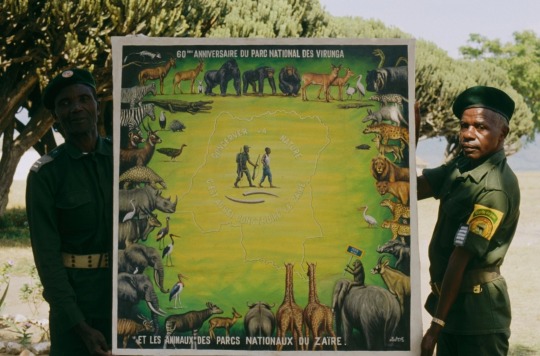
Although these nonprofits have done important work in raising awareness of the extinction crisis, and have had some successes, experts say that the model of colonial conservation has not changed and has only made the problem worse.
Over the years, WWF and other nonprofits have helped fund violent campaigns against Indigenous peoples, from Nepal to the Democratic Republic of the Congo. And amid it all, climate change continues to worsen and species continue to suffer.
In 2019, in response to allegations about murders and other human rights abuses, WWF conducted an independent review that found “no evidence that WWF staff directed, participated in, or encouraged any abuses.” The organization also said in a statement that “We feel deep and unreserved sorrow for those who have suffered. We are determined to do more to make communities’ voices heard, to have their rights respected, and to consistently advocate for governments to uphold their human rights obligations.”
“I think most of [the big NGOs] have become part of the problem rather than the solution, unfortunately,” Büscher said. “The extinction crisis is very real and urgent. But, nonetheless, the history of these organizations and their policies are incredibly contradictory.”
To Indigenous people who had already suffered from decades of colonial conservation policies, little changed with decolonization.
“When we got independence, we kept on the same policies and regulations,” said Mathew Bukhi Mabele, a conservation social scientist at the University of Dodoma in central Tanzania.
In 1992, representatives from around the world gathered in Rio De Janeiro for the United Nations Conference on Environment and Development. The Earth Summit, as it has come to be known, led to the creation of the United Nations Framework Convention on Climate Change as well as the Convention on Biological Diversity, two international treaties that committed to tackling climate change, biodiversity, and sustainable development.
Biodiversity is the umbrella term for all forms of life on Earth including plants, animals, bacteria, and fungi.
Although the Earth Summit was a pivotal moment in the global fight to protect the environment, some have criticized the decision to split climate change and biodiversity into separate conferences.
“It doesn’t make sense, actually, to separate out the two because when you get to the ground, these are going to be the same activities, the same approaches, the same programs, the same life plans for Indigenous people,” said Jennifer Tauli Corpuz, who is Kankana-ey Igorot from the Northern Philippines and one of the lead negotiators of the International Indigenous Forum on Biodiversity.
From left: The 1992 UN Conference on Environment and Development, also known as the Earth Summit, brought together political leaders, diplomats, scientists, representatives of the media, and non-governmental organizations from 179 countries. Indigenous environmentalist Raoni Metuktire, a chief of the Kayapo people in Brazil, talks with an Earth Summit attendee.
In the years following the Earth Summit, biodiversity efforts began to lag behind climate action, Corpuz said.
Protecting animals was trendy during the early days of WWF, when images of pandas and elephants were key fundraising tactics. But as the impacts of climate change intensified, including more devastating storms, higher sea levels, and rising temperatures, biodiversity was struggling to gain as much attention.
“There were 100 times more resources being poured into climate change. It was more sexy, more charismatic, as an issue,” Corpuz said. “And now biodiversity wants a piece of the pie.”
But to get that, proponents of biodiversity needed to develop initiatives similar to the big goals coming out of climate conferences. For many conservation groups and scientists, the obvious solution was to fall back on what they had always done: create protected areas.
This time, however, they needed a global plan, so scientists were trying to calculate how much of the world they needed to protect. In 2010, nations set a goal of conserving 17 percent of the world’s land by 2020. Some scientists have supported protecting half the earth. Meanwhile, Indigenous groups have proposed protecting 80 percent of the Amazon by 2025.
How the world arrived at the 30×30 conservation model
Explore key moments in conservation’s global legacy, from the United States’ first national park in the 19th century to the expansion of colonial conservation areas in the early 20th century and the current push to protect 30 percent of the world’s land and oceans by 2030.
1872: Yellowstone becomes the first national park in the U.S.
1919: King Albert I of Belgium tours Yellowstone, Yosemite, and the Grand Canyon
1925: Albert National Park is established in the Belgian Congo
1933: One of the first international treaties to protect wildlife, known as the London Convention, is created by European conservationists
1948: The International Union for Conservation of Nature (IUCN) is established
1961: The World Wildlife Fund, a non-governmental organization, is founded by European conservationist
1992: The Earth Summit in Brazil creates the Convention on Biological Diversity (CBD)
2010: CBD sets a goal of conserving 17% of the world’s land by 2020
2022: At the UN Biodiversity Conference, nearly 200 countries set 30×30 as an international goal
In 2019, Eric Dinerstein, formerly the chief scientist at WWF, and others wrote the Global Deal for Nature, a paper that proposed formally protecting 30 percent of the world by 2030 and 50 percent by 2050, calling it a “companion pact to the Paris Agreement.” Their 30×30 plan has since gained widespread international support.
But other experts, including some Indigenous leaders, say the idea ignores generations of effective Indigenous land management. At the time, there was limited scientific attention paid to Indigenous stewardship. Because of that, Indigenous leaders say they were largely ignored in the early years of international biodiversity negotiations.
“At the moment, we did not have a lot of evidence,” said Viviana Figueroa, who is Omaguaca-Kolla from Argentina and a member of the International Indigenous Forum on Biodiversity.
Some experts see the push for global protected areas as a direct response to community-based conservation, which grew in popularity in the 1980s, and saw local communities and Indigenous peoples take control of conservation projects in their area, rather than the centralized approach that had dominated during colonial times.

Some of the chief proponents of 30×30 bristle at the suggestion that they do not support Indigenous rights and say that Indigenous land management is at the heart of the initiative.
In response to a request for comment, a spokesperson from WWF pointed to its website, which outlines the organization’s approach to area-based conservation and its position on 30×30: “WWF supports the inclusion of a ‘30×30’ target in CBD’s post-2020 global biodiversity framework (GBF) only if certain conditions are met. For example, such a target must ensure social equity, good governance, and an inclusive approach that secures the rights of Indigenous peoples and local communities to their land, freshwater, and seas.”
“People have cherry-picked a few examples of where the rights of locals have been tread upon. But by and large, in the vast majority of situations, what’s going on is support of local communities, really, rather than anything to do with violation,” said Dinerstein, who now works at Resolve, a Washington, D.C.-based nonprofit focused on environmental, social, and health issues.
But Indigenous advocates say if that were true, they would not keep pushing a model that has already led to countless human rights violations.
“Despite having this knowledge and knowing that people who are not contributing to the destruction of the environment are going to pay for these protected areas, they decided to keep on pushing the target,” Survival International’s Longo said.
The new 30×30 framework agreed to by nearly 200 countries at the UN Biodiversity Conference in December came after years of delay and fierce negotiation. The challenge is now implementing the agreement around the world, a massive task that will require buy-in from individual countries and their governments.
“What was adopted in Montreal is hugely ambitious. And it can only be achieved by a lot of hard work on the ground. And it’s a great document, but it is only a document,” said David Cooper, acting executive secretary of the UN’s Secretariat of the Convention on Biological Diversity.
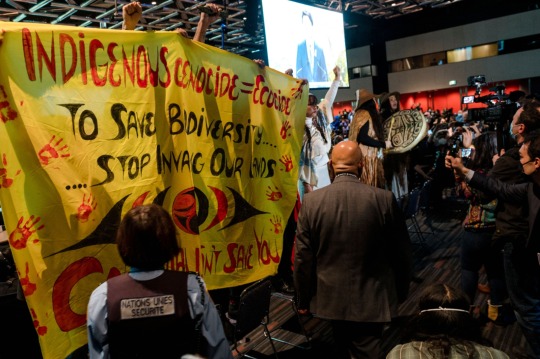
Part of that work is figuring out what land to protect. And although Indigenous negotiators and advocates did manage to get language that enshrines Indigenous rights into the final agreement, they are still concerned. Over a century of colonial conservation has shown that it only serves the powerful at the expense of Indigenous peoples.
“European countries are not going to evict white people from their lands,” said Longo. “That is for sure. This is where you see all the racism around this. Because they know how these targets will be applied in Africa and Asia. That’s what’s going on, they are evicting the people.”
Dinerstein, however, would argue that European countries have less natural resources to preserve, but more financial resources to help other countries.
“There’s a lot that can be done in Europe,” he said. “So we shouldn’t overlook that as well. I’m just making the point that there’s the opportunity to be able to do much more in other countries that have much less resources.”
Cooper said that in addition to implementation, monitoring and ensuring that rights are upheld will be a crucial task over the next seven years. “There will need to be a lot of work on monitoring. There’s always a justified nervousness that any global process cannot really see what’s happening at the local level and can end up with supporting measures that are perhaps not beneficial at the local level,” he said.
Although Indigenous leaders are going to keep fighting to ensure that the expansion of protected areas does not lead to continued violation of their rights, they are worried that the model itself is flawed. “It’s inevitable that the burden is going to fall again on developing countries,” Corpuz said.
#colonial violence#languages#How the world’s favorite conservation model was built on colonial violence#colonialism#brazil#indigenous populations#Yanomami#bolsanaro#the amazon#amazon rainforest#natural resources#ecology
30 notes
·
View notes
Text
@imjustanauthor for Jeremiah
Occasionally, Edgar found that he would have to lie low for a short while. It usually meant he would vanish to an island somewhere and soak up the sun while lying on a beach enjoying a cocktail. However since his involvement with Delta Green, he found he could not quite bring himself to leave the country. So he decided to kill two birds with one stone and check in on his newest acquaintance, Jeremiah after the ordeal they had gone through in Yosemite. A little digging had revealed his address, suitably remote and a few calls and checks later had Edgar set on going out there.
Once everything was in place, he rang Jeremiah's number, graciously offered by the staff at the ranger's station. Edgar sometimes could apply those diplomacy skills to get what he wanted. However he might have been cheating in this case as he waited for Jeremiah to answer.
3 notes
·
View notes
Text
the concept of a pristine, untouched place serves only as a marketing tactic to allow the permanent alteration of land in it’s natural state in areas considered less desirable than the “natural wonders” of the world to generate profit from and invite tourism to the more desirable place before they “vanish off the map” “become the hottest destination” “are destroyed by climate change”. yosemite is as beautiful as the land LA freeways were built on. antarctica is as ecologically important as the plains were before native plants were stomped out by agriculture. i miss my foothills. i miss my mule deer in the mornings i miss the cottontails at night i miss the sagebrush and oak trees and the chamise. the shepherd from my childhood’s 10,000 sheep still treaded lighter on the land than the skid steers and tractors and dozers turning beautiful rolling red foothills into the newest suburban housing tract, chaparral turned to truck yards. i pray every night a fire, a flood, something, washes away, burns away, takes away this carnage
3 notes
·
View notes
Text
Way to Go
I read about this guy who had hiked to the top
of Angel Falls in Yosemite National Park, and
when he got there, he wanted to check out the
water, of course he did, but falls look different
when you see them from the top; it’s just water
moving over an edge into a vanishing skyline,
and he got right up to the water’s edge to take
a picture, of course he did, and stepped into the
water to get a better shot, and the moving water
took him away, of course it did, and though he
was an idiot, I understand how such a place can
be intoxicating, how the very last thing he was
thinking about was his own mortality and there
was no way he could die in such an exquisitely
beautiful place, going over the waterfalls; that
kind of thing only happened in movies, it wasn’t
real, and I wonder if he thought all these things
as he went over the edge into the blue sky abyss
of vanishing weightlessness—of course he did.
-GeorgeFilip
#poem#poetry#poetrythreesixfive#georgefilip#spilledink#spilledwords#poetsandwriters#poetsontumbler#poetryportal#stupidpeople#Darwinawards#surreal
2 notes
·
View notes
Text
tvrundown USA 2023.08.26
Saturday, August 26th:
(streaming twice weekly):
Behind Your Touch (netflix),
The Uncanny Counter (netflix)
(original made-for-TV movies):
"Dream Wedding" (GAFam, 2hrs),
"Napa Ever After" (HALL, 2hrs),
"Vanished in Yosemite" (LIFE, 2hrs+)
(other highlights):
Shakespeare & Hathaway (OVAtion, 2hrs, season 2 finale),
The Great Chocolate Showdown (theCW),
Johnson (BounceTV),
"Attenborough: Behind the Lens" (BBCAm, 70mins),
Recipe for Disaster (theCW, 60mins),
Austin City Limits (PBS, modern rockers "The War On Drugs")
(latenight "Toonami" [adultswim]):
My Adventures With Superman ("Zero Day: Part Two" reair),
Dr. Stone (#3.11, midseason finale),
FLCL (season 2 "Progressive" reair, all 6 eps)
{episode titles and full schedule at [adultswim]}
0 notes
Text
When I found the orb, I could not believe my eyes. An alien technology I stumbled upon in the Great Salt Flats.
(Story continues on each image)

Immediately I felt as if it made an inter-dimensional connection with my mind…

…communicating with me about its power and potential, as its appearance shifted in and out of endless new forms.

I became one with it, as if the owner's operator manual downloaded into my subconscious through some kind of psychic internet.

It was at that moment, I realized it was also a Time Machine. I packed up what I needed to survive in the wilderness for a few months and started on my adventure.

I set my sight on 10th century North America. My first stop was visiting the Miwok Peoples of Yosemite Valley, who had made this beautiful park their home for over 4,000 years before the first European settlers arrived.

In the first weeks I spent in the past, I discovered vast improvements to my health. The pristine beauty of this untapped and unspoiled wilderness, completely blew my mind. My asthma vanished, and my head began to clear more than I imagined was possible. I felt like a new man, and my thoughts began to put all the pieces together. I finally knew what my mission was.

The alien technology gave me the power to replicate a portable solar powered 8K Laser Projector, and portable surround sound system. I already had a collection of my favorite films on a 16TB solid state drive that I always carry with me everywhere in my backpack.
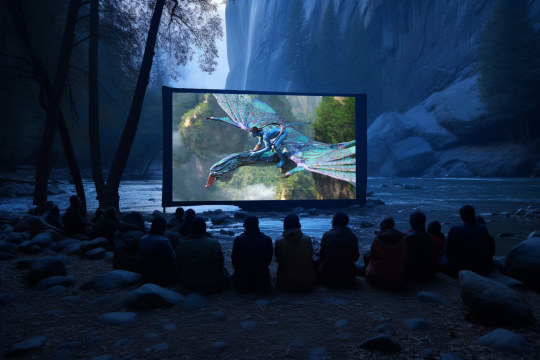
The first films I screened for the Miwok Peoples was Avatar and Avatar 2. These are all the photos I took.

These films completely rocked their world. I did not know their language, and even though all my films were in English, this didn't seem to bother the Miwoks. They were so mesmerized by the music, images, emotions and wonder of this dream technology, the only thing they successfully communicated with me, was that they wanted to watch it again and again all night, until the sunrise at dawn prevented any further viewings.
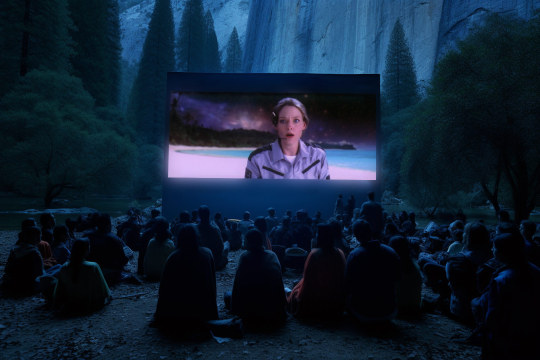
The next night I screened Contact for the Miwoks, which blew their minds even more. They could not take their eyes off the screen for the films entire duration. And when it was finished, they erupted into cries, demanding to see it again.

I had to keep moving on, so I snuck away from the Miwoks and made my way towards Utah, where I visited the Navajo, in an area where Moab would eventually stand. My first night I screened Spider-Man 2. Some of the Navajo were so blown away by the moving images, they approached the screen, thinking they might enter this strange world, the way I entered theirs through my time-machine jump gate.
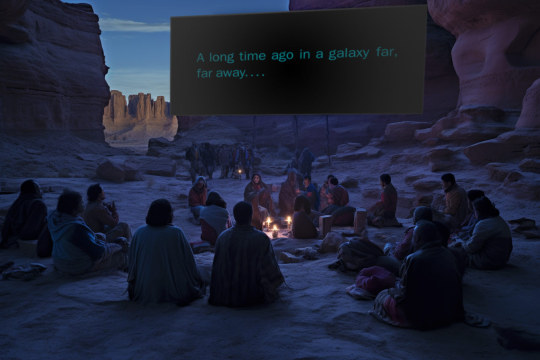
I spent the next week in the Canyonlands and Arches region, screening Star Wars, which attracted some of the largest crowds of Natives yet.

The following week, I screened Gravity for many tribes in the Arches area, with this particular screening near delicate Arch. I wish I could speak the language of these peoples to explain what it was they were seeing, especially the Earth scenes from space. It was during these moments when the tribes broke into the most excited chatter. Perhaps they intuitively already knew what it was they were looking at.

As I made my way further East, I started screening Pixar movies. This was the Inside Out showing I put on for the tribes near Mesa Verde, which was their all time favorite.

As I passed the great divide and made my way into the Ozarks, I visited the Osage tribe of Oklahoma, screening for them; BFG. Their favorite moment was the dream hunt sequence through the lake dimensional portal.

Into Arkansas, I screened Black Panther which was a favorite among many tribes. They were completely mesmerized by the battle sequences. The elders seemed to understand the concept behind T'Challa's Dream World sequence after eating the sacred Vibranium herb.
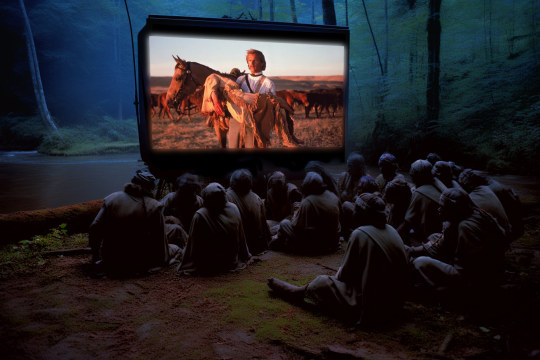
The Tioux Tribe fell in love with Dances with Wolves when I screened it. It seemed many of the natives among them, even understood some of the language spoken by the Comanche in the movie.
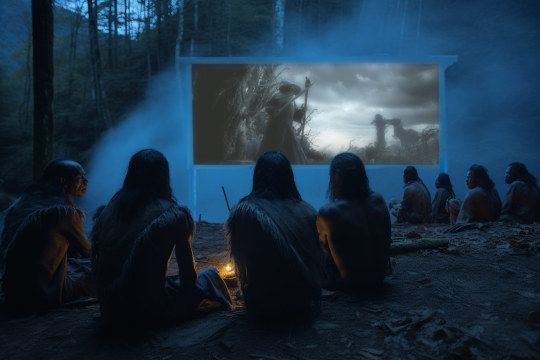
Next I screened the Hobbit and Lord of the Rings trilogies for the Cherokee of the Great Smoky Mountains, who absolutely fell in love with Tolkien’s world.

Further North I screened the Star Wars sequels.

One of the all time best receptions to my films came when I screened the Greatest Showman for the Susquehannock of Pennsylvania. They loved the music so much, they could be heard singing it hours later and even into the next morning.

In New England, I screened Tomorrowland for the Onondaga, who loved the pin scenes the most, where Casey Newton was transported to the future utopian city.

When I took the Time Machine back home to 2023, I found myself in a real life Tomorrowland. My objectives were complete. My intent from the very beginning, was to save humanity from the climate crisis and World War 3. I returned to an Earth light years ahead of what I'd left behind. Humanity was united into a United States of Earth, and I discovered a science renaissance had swept North America starting in the 12th Century after I'd left.

I knew from the beginning of my mission, that screening films across North America would have the same effect we saw in Arthur C Clarke's masterpiece; 2001, with the monoliths serving to facilitate a quantum leap in consciousness for humankind. Feeding back future films to ancient peoples, had a similar impact, creating mutations in their consciousness that drove them to seek a world as wondrous as what they witnessed on the big screen. When Europeans arrived, they were not defeated, because their technology was superior to anything coming at them from Columbus. And just as I suspected, the technology of Native Americans relied more on biomimicry and alternative energy. They completely left the fossil fuels in the ground.
“Why” you ask, didn’t humanity’s films have the same impact on present day civilization? It’s because the skyrocketing CO2 in the atmosphere created a dumbing down effect for all humankind, where new pandemics were erupting just as IQ’s were plummeting, and humans were incapable of saving themselves from their predicament. Think of the analogy of a frog sitting in a slowly heating pot, the gradual heat doesn’t let them see that anything is wrong, until it’s too late, right before the boil. The sphere revealed to me that the climate and CO2 crisis in the atmosphere was having the same disastrous effect on humankind. That’s why aliens chose me, because their non interference prime directive prevented them from saving us themselves. But if they could get their technology into the hands of a trusted human, to travel back in time and recover from CO2 sickness, they might be able to change the timeline enough to save the world.
#avatar#avatar2#james cameron#jamescameron#pandora#navi#thewayofthewater#worldspirit#NativeAmericans#NativeAmerica
0 notes
Video
I Got Lost One Time (Yosemite National Park) by Mark Stevens
Via Flickr:
I Got Lost One Time And thought all had vanished Nothing seemingly was recognizable Almost all was different So while things weren't the same I began to realize I only needed to find out what I had. Another work of short poetry or prose to complement the image captured around noon one day in Yosemite National Park at a bend in the Merced River with a view beyond to Half Dome. My thinking in composing this setting was to capture a look to the east across those river waters to the mountains and peaks of the Central Yosemite Sierras. A balanced, leveled-on type view. Blues of the skies above would be that color contrast to complement the earth-tones in the lower portion of the image. I chose to initially work with Aurora HDR Pro to better bring that complete setting in the image, given the bright afternoon sunlight and darker portions in the trees caught in shadow. I later exported a TIFF image to DxO PhotoLab 5 where I did some final adjustments with contrast, saturation and brightness for the final image.
#Aurora HDR#Aurora HDR Pro#Azimuth 89#Blue Skies#Blues Skies with Clouds#California and Oregon Road Trip#Canvas#Central Yosemite Sierra#Day 5#DxO PhotoLab 5 Edited#Evergreen Trees#Evergreens#Forest#Forest Landscape#Free Verse Poetry#HDR#Half Dome#Landscape#Landscape - Scenery#Looking East#Merced River#Mountain Peak#Mountains#Mountains in Distance#Mountains off in Distance#Mountainside#Nature#Nikon D850#No People#North Dome
0 notes
Text
Mount Kilimanjaro may be glacier free by 2050, latest dire climate report warns
Mount Kilimanjaro may be glacier free by 2050, latest dire climate report warns
Africa’s highest mountain, Mount Kilimanjaro, is in danger of losing all its glaciers (Picture: Getty Images / USGS)
Mount Kilimanjaro’s glaciers will have vanished within three decades, a new report has said.
Glaciers in one third of UN World Heritage sites are set to melt by 2050, including Africa’s highest mountain, some of the Alps and Yosemite National Park in the US.
In some incredibly…

View On WordPress
0 notes
Text
Mount Kilimanjaro may be glacier free by 2050, latest dire climate report warns
Mount Kilimanjaro may be glacier free by 2050, latest dire climate report warns
Africa’s highest mountain, Mount Kilimanjaro, is in danger of losing all its glaciers (Picture: Getty Images / USGS)
Mount Kilimanjaro’s glaciers will have vanished within three decades, a new report has said.
Glaciers in one third of UN World Heritage sites are set to melt by 2050, including Africa’s highest mountain, some of the Alps and Yosemite National Park in the US.
In some incredibly…

View On WordPress
0 notes
Text
Markosia Spotlight On: The DragonStar Chronicles: Book 1 – Sofi’s Diary
Markosia Spotlight On: The DragonStar Chronicles: Book 1 – Sofi’s Diary
PREVIEW
Sofi, a determined but creatively-challenged young artist, is hiking in Yosemite when she witnesses an otherworldly flash that fills the evening sky. Hours later she sees a tiny blue light descend from the stars and disappear into the forest. Sofi pursues it to a small clearing, but when she feels compelled to touch the mysterious visitor – still too small to identify – it vanishes in a…

View On WordPress
0 notes
Text
Garageband mac os sierra review

#Garageband mac os sierra review for free
#Garageband mac os sierra review install
#Garageband mac os sierra review update
#Garageband mac os sierra review Patch
#Garageband mac os sierra review full
#Garageband mac os sierra review install
You may want to install the iMovie and iDVD versions as well, if you like to make videos. The iLife CD also has older versions of iMovie, iPhoto, and iDVD. Now reinstall GarageBand ♁0 from the AppStore. Then test GarageBand 6.0.5, if it is running well. Before you open the installed GarageBand 6.0.x for the first time, run the updater from the Support page: Use this link: GarageBand 6. The only problem will be, that the iLife installer DVDs will not install GarageBand 6.0.5 but an earlier version, that cannot run directly in Mavericks. Otherwise would the GarageBand 10.0 installer not let it installed in a separate folder. GarageBand 6.0.5 is running well with Mavericks. If GarageBand 10.0 is listed as your purchase, you can temporarily uninstall it (remove it from the Applications folder), before you install the older version.ġ) Getting previous versions of GB from iLiFe older version shouldnt mess my Maverick.
Sign into the AppStore (the Store menu) and check, if GarageBand 10.0 is listed on your Purchased tab.
#Garageband mac os sierra review full
Make a full Time Machine backup of your Mac, so you are able to restore the previous state.
#Garageband mac os sierra review for free
This great tool can be downloaded for free from the Bullets&Bones site:īefore you do any installing, take the following precautions:
#Garageband mac os sierra review Patch
To browse and find out the effects available with each instrument patch use the tool "GB Effect Finder". You add effects by selecting a patch from the library that has the effects. You can no longer add effects freely to each and every track, only audio units.
#Garageband mac os sierra review update
Your only option would be to buy an iLife '11 DVD from Amazon and use that the install GarageBand '11, and then update that version to GarageBAnd '11 from the apple Support Downloads page.Ģ) The new Mac is missing a lot of old mac effects like 'Track echo', 'Track reverb' etc., where do I find them all? On a Mac with GarageBand 10 preinstalled you cannot buy the older GarageBand '11 from the AppStore. Otherwise use the original installers from the old Mac or migrate all libraries. If you previously owned GarageBand and bought it from the App Store, GarageBand '11 may still be showing among your purchases on the "Purchased" tab. I am lucky enough to have an older MacBook (with Garageband 6.1) Is that possible I download an older version of GB, and keep using both new and old versions?īoth versions can be installed in parallel, but it is not easy to buy GarageBand '11 for a Mavericks Mac.ĭo you have an old mac with a previous GarageBand installation or is your first GarageBand installation? I won’t go into everything else I tried with no success, but this worked. Upgraded to Mavericks or Yosemite and suddenly found many of my old Garageband loops had vanished. I hope the following is helpful to some of your readers. It might be a problem with corrupted preferences files: if parts of the user interface do not work, it frequently helps to remove the preferences files and to clear the caches: Quit GarageBand. If no loops are installed, try to download more loops using the command 'GarageBand Sound Library Download all available sounds'. Next, you need an administrator login user. It'll open App Store, and that won't download anything, and it'll all fail. Click on any gray loop's download arrow, and tell it to download it now. First thing to do is go to GarageBand and make it go through its fakeout cycle telling you it's updating the loops. (Turning off Compressor for an individual track won’t make a difference.). Adding loops to GarageBand isn’t just a matter of stuffing them into a folder on your hard drive. Select Install to download and install GarageBand. Follow the recommendations below in the order in which they’re listed until you've fixed your issue. Learn what to do if GarageBand won't open, won't open your project, or won't play back your project. Sign up for free to join this conversation on GitHub. Settings deleted successfully, but ID is not reset. GitHub Gist: instantly share code, notes, and snippets. Teamviewer is the best software in the market for sharing our pc screens.But however the trial version of teamviewer is just for 7 days and then you have to buy the full verison.There is a trick to reset teamviewer trial,id and password.But this process just lasts for 7 days only. Have tried: Uninstall using delete config files option. The new mac reset the ID, but the old one is stuck. No worries, just delete the config on each laptop and reopen. The old mac, I still need to login via teamviewer but the duplicate ID issue has arisen. Have a mac that I have cloned teamviewer from. With a wide range of useful functions, the program offers top-quality software within all its versions. The application is available for Windows, Linux, Mac OS, Chrome OS, Android, iOS, Blackberry and Windows App devices. TeamViewer 12 is a modern application that allows its users to initiate a remote access to different devices.

0 notes
Conversation
Yosemite Sam: The police - they laugh at me. Ah'm a joke to them.
Bugs: I'm beginning to see their point.
4 notes
·
View notes
Photo

The strange disappearance of George Penca in Yosemite National Park
On Friday, June 17, 2011, George Penca, 30, went hiking at the Upper Yosemite Falls in Yosemite National Park. George was from Hawthorne in California and was visiting the National Park with his church group of 80 people of which around 20 people were walking the Upper Yosemite Fall trail that day.
The group separated at the top, with the hikers going back down at their own pace. George most likely fell behind the main group. His friends assumed he'd hiked back to the Yosemite Valley floor earlier and didn't report him missing until 9 pm that evening. In the meantime, George had vanished off the trail. A large search of the area turned up no sign and he remains missing.
Initial search efforts began on Friday, June 17, 2011, after George was reported missing and a full-scale search and rescue operation was initiated on Saturday morning, June 18th. Weather conditions over the weekend were mild with overnight temperatures in the upper 40°F range.
On June 23, 2011, search efforts transitioned to a limited continuous search. After nearly one week of intensive searching, Park Rangers did not find any clues as to George's whereabouts.
George was 5’ 10” tall, weighed 240 pounds, and had dark brown hair, blue eyes, a stocky build. He was last seen wearing grey sweatpants with white stripes, a black t-shirt that says “D&B” across the chest, or a black tank top, and grey/blue running shoes. He was carrying a blue cloth bag and some limited food and water.
15 notes
·
View notes